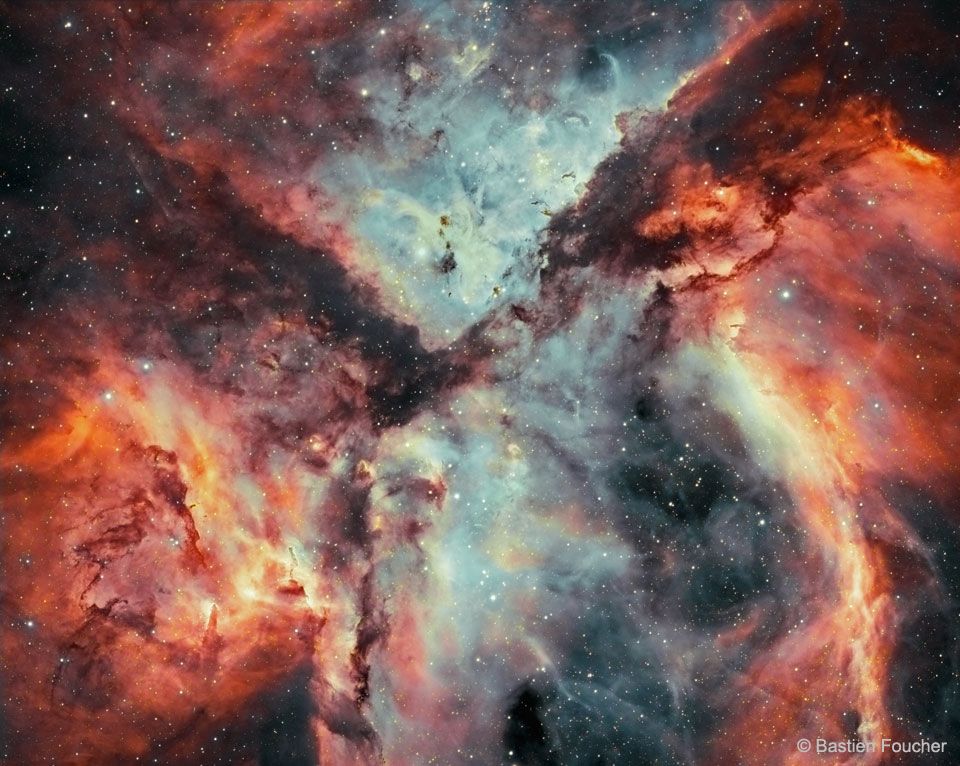Stars, Gas, and Dust Battle in the Carina Nebula
Image Credit & Copyright:
Bastien Foucher
Chaos reigns in the Carina Nebula where massive stars form and die.
Striking and detailed,
this close-up of a portion of the famous nebula is a combination of light emitted by
hydrogen (shown in red) and
oxygen (shown in blue).
Dramatic dark dust knots
and complex features revealed are
sculpted by the
winds
and radiation of Carina's massive and
energetic stars.
One iconic feature of the
Carina Nebula
is the dark V-shaped dust lane
that occurs in the top half of the image.
The Carina Nebula spans about 200
light years, lies about 7,500 light years distant,
and is visible with binoculars toward the
southern constellation of Carina.
In a
billion years after the dust settles -- or is destroyed, and the gas dissipates -- or
gravitationally condenses, then only the
stars will remain -- but
not even the brightest ones.





